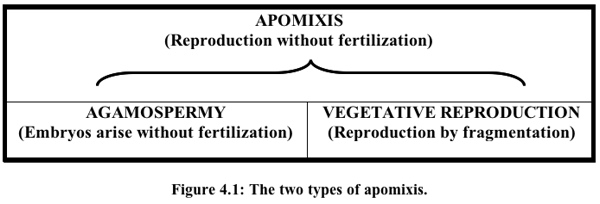On the Origins of New Forms of Life
4: Stabilization Processes: Examples
|
Any advance in our knowledge depends on the possibility of seeing species originate.
—Hugo de Vries
The Origin of Species by Mutation (1902) |
Saltation, or saltatory evolution, refers to the abrupt production of new forms of life. This section will list and explain various well-known genetic processes that produce new forms in a saltatory manner and give examples of each. I call evolutionary mechanisms of this sort stablization processes because they all produce new stable genetic states. Stabilization processes differ from many of the processes described in the evolutionary scenarios of neo-Darwinian theory, not only qualitatively, but also in that they are far better documented — For each kind of stabilization process, there are definite, well-known examples of new types of organisms being so produced. Before listing these processes, it will be necessary to introduce some additional terminology.
Apomixis. A very common form of reproduction is apomixis, in which fertilization does not occur. It stands in contrast to the life cycle of sexual forms undergoing alternation of generations. There are two main types of apomictic reproduction, agamospermy and vegetative reproduction (Figure 4.1).

In agamospermy the embryo develops from specialized reproductive tissues, but without fertilization. Although agamospermy is a term not usually applied to animals, many animals do reproduce by means that in a plant would be called agamospermy. Therefore, in subsequent discussion the term will be used not only in referring to plants, but also in a general way to refer to all forms reproducing this way. Animal agamosperms are usually called parthenogens. In both plants and animals, parthenogenesis involves development of the embryo from an unfertilized egg. However, in plants, additional types of agamospermy are recognized in which the embryo develops from reproductive tissues other than the egg cell. However, since in the upcoming discussion there will be no need to refer to those types specifically, they need not be enumerated here.